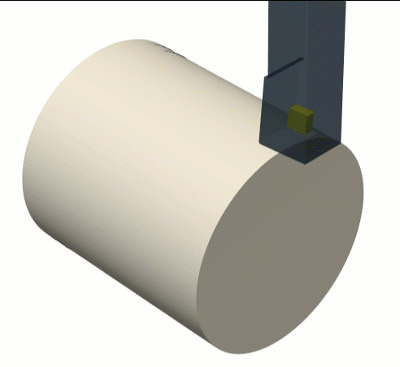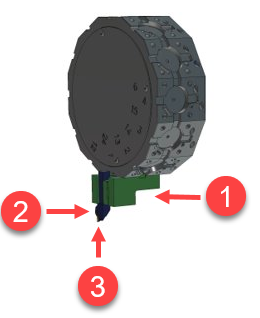Turning
Turning is a process where a stationary cutting tool machines a part while the part is rotating. Machining is limited to a 2-axis plane, typically the ZX plane: the vertical X axis and the horizontal Z axis.

In turning operations, a part is fixed on the rotating chuck.
Turning machines
For turning operations, you use machines called lathes. A lathe rotates the part about the axis of rotation to machine an object that is symmetrical about that axis.
In Fusion, use the Machine Library dialog to select a machine from the standard Fusion library or from your personal libraries. You can also create custom machines.
The tool is mounted on the machine's part called a turret. It can hold several cutting tools, rotate about its vertical axis, and perform different operations in one session. Using turrets helps increase process productivity.

Turret. The number of tool blocks (1) varies depending on the machine. The tool holder (2) fixes the cutting tool (3) to the turret.
Turning enables you to machine cylindrical or conical parts, such as shafts, rings, wheels, bores, and threads.
Programming in radius or diameter
In Fusion, you can program turning operations in either radius or diameter. The default is radius, but you can change the setting in the Preferences dialog. In the General > Manufacture page of the Preferences dialog, in the Turning group, select Diameter programming to program in diameter values instead of radius values.
